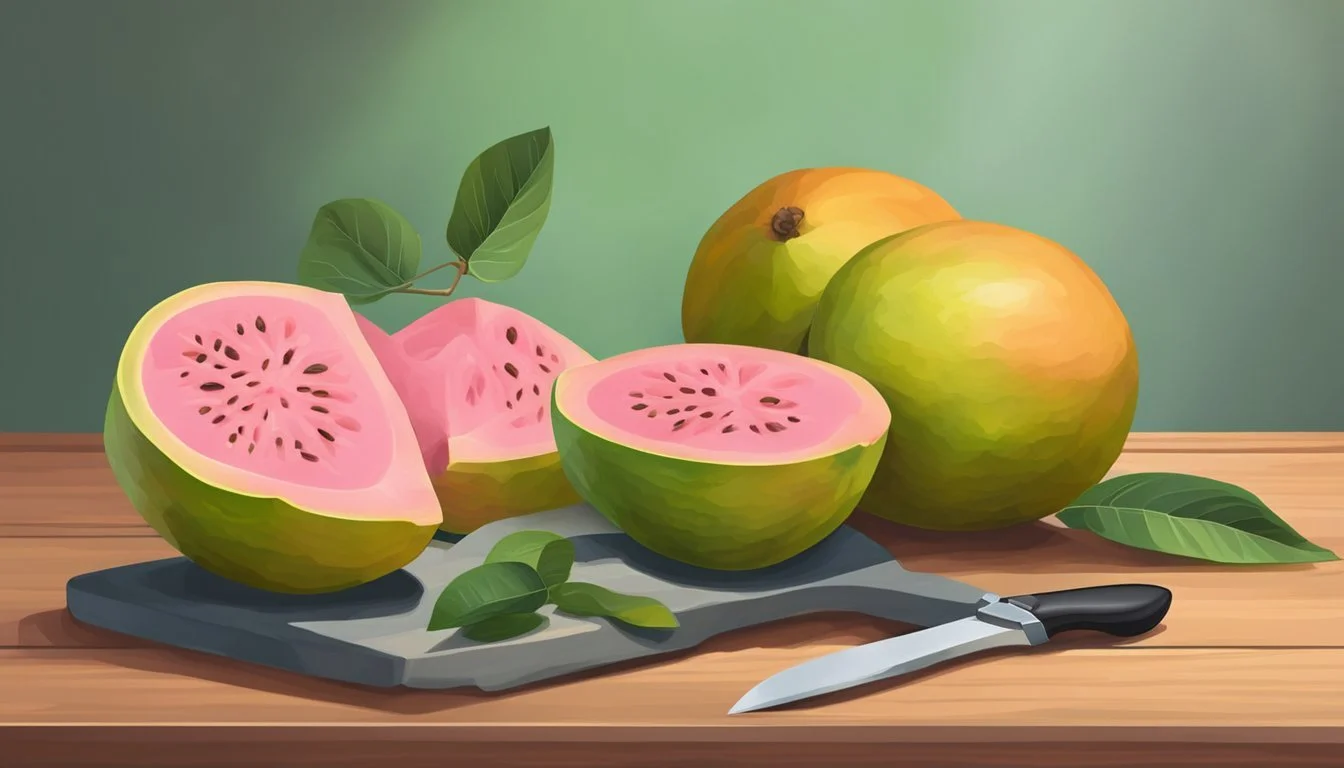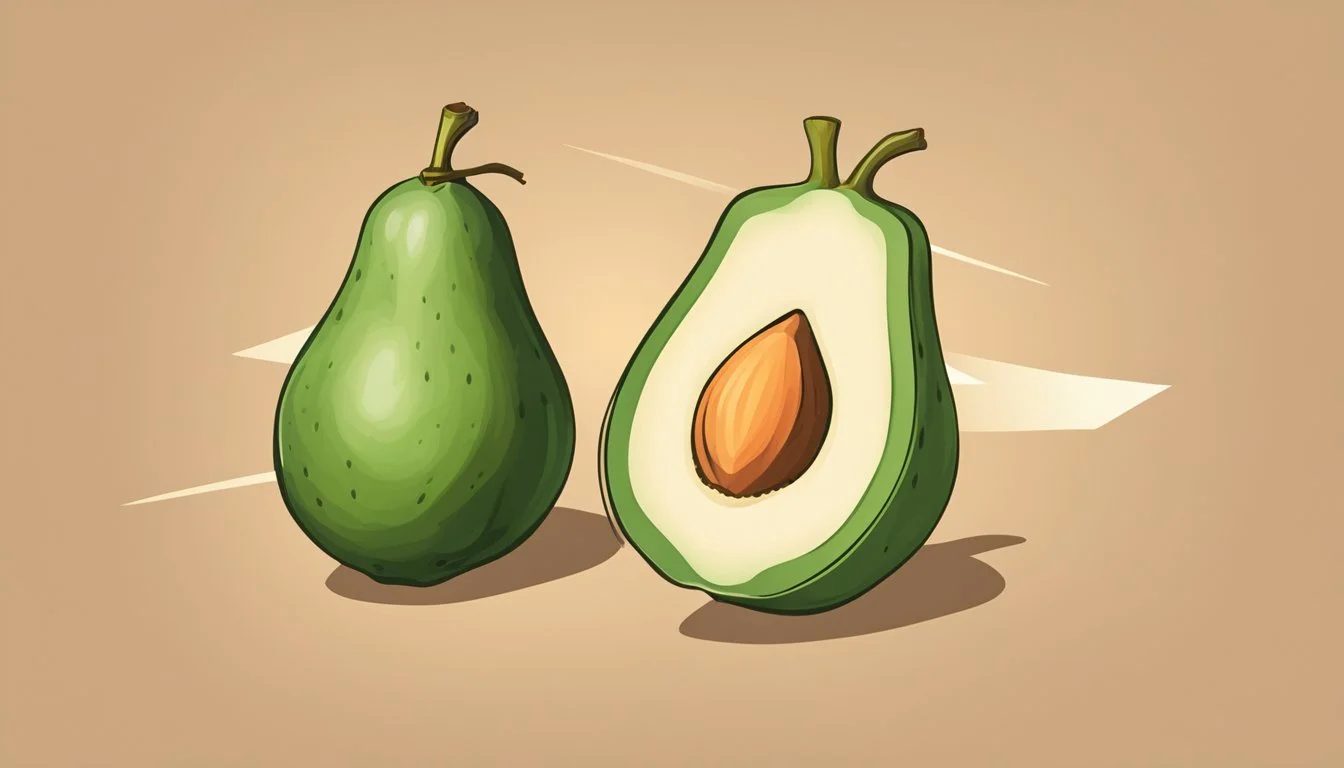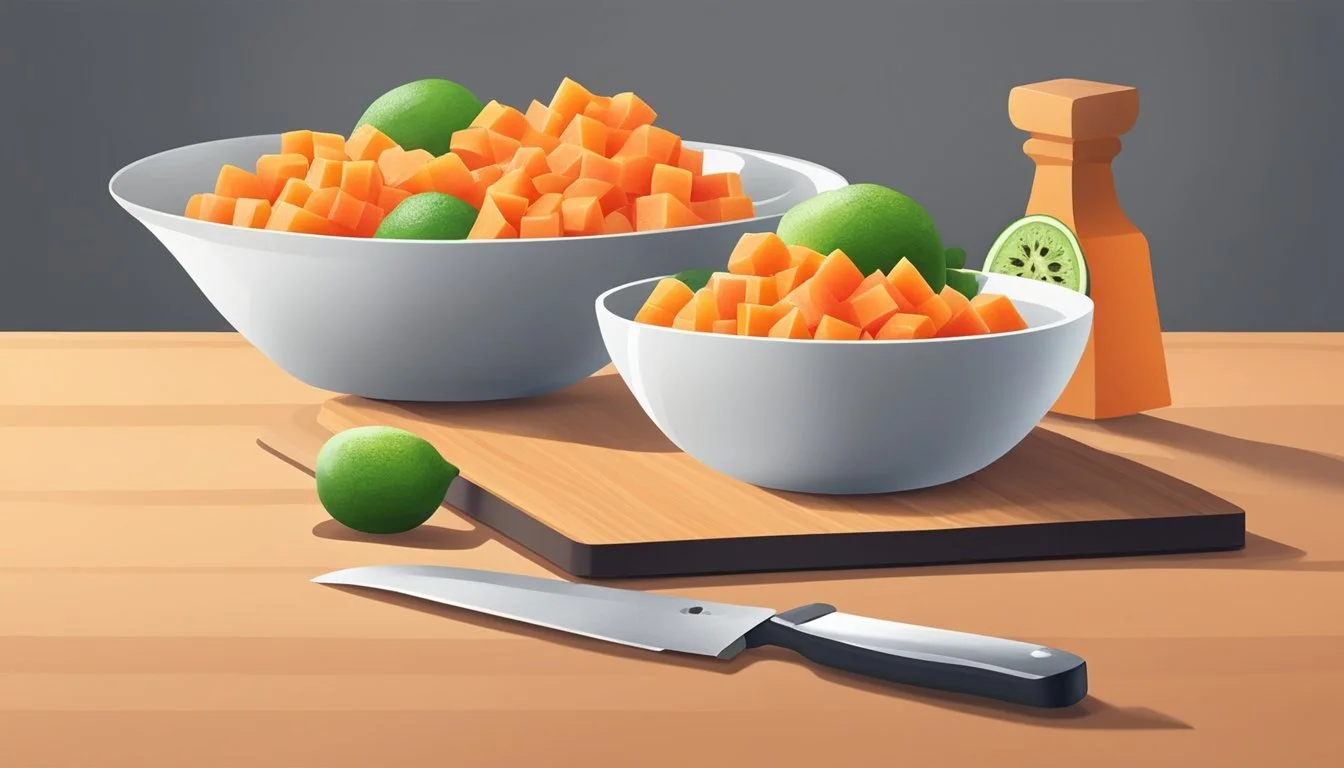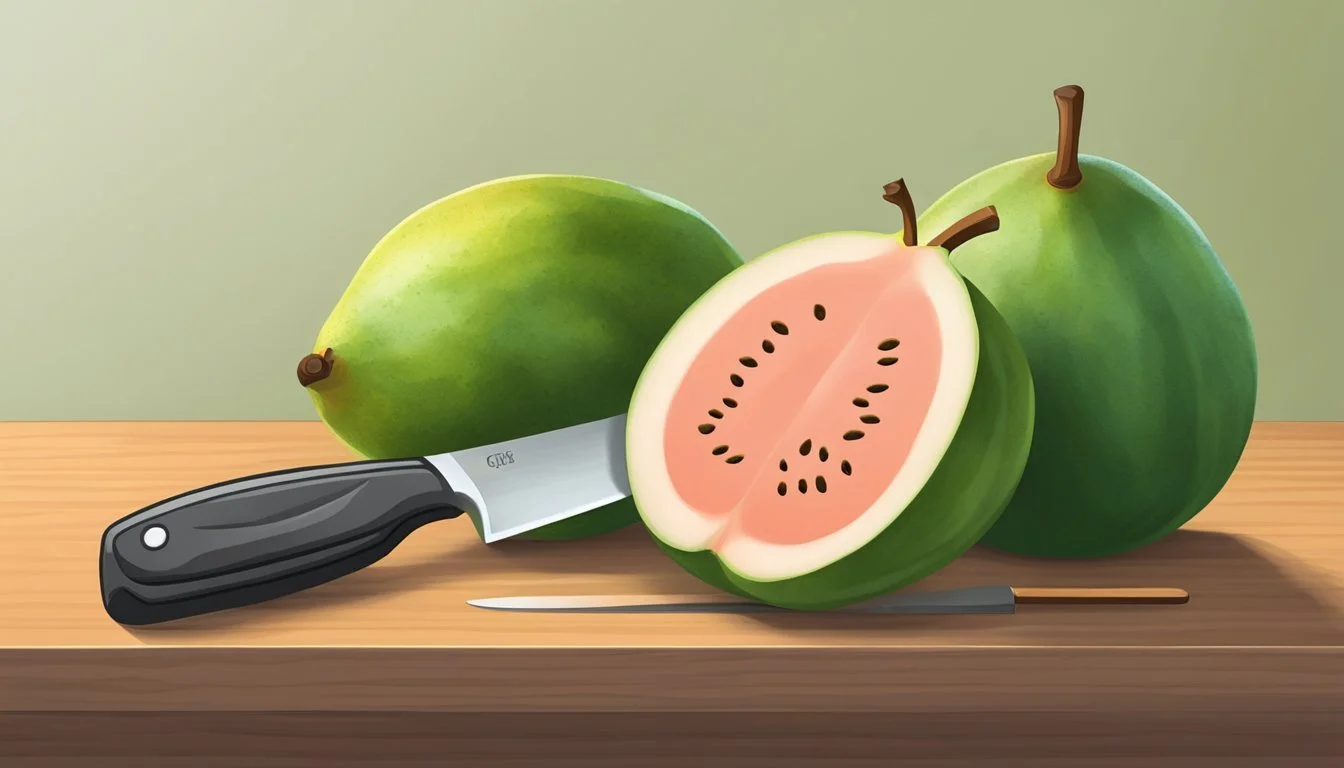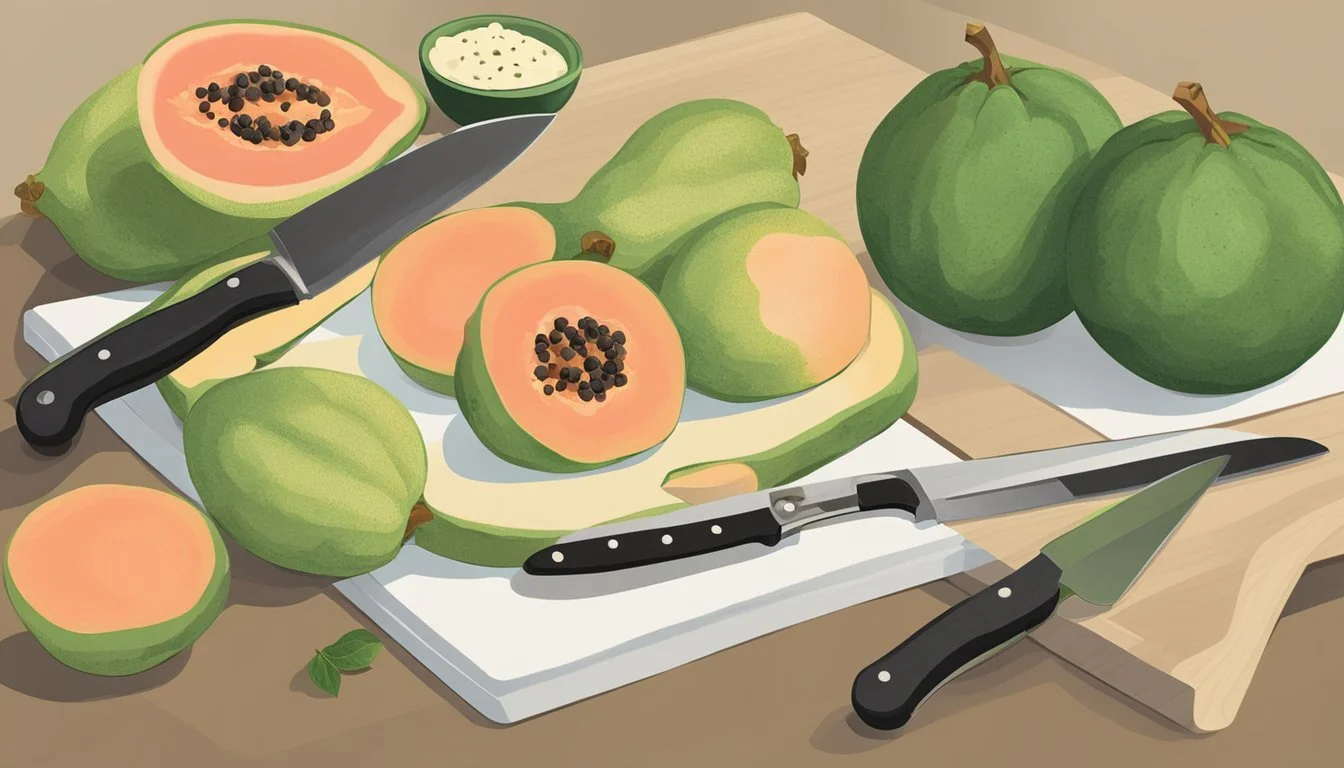How to Substitute Guava for Papaya in Tropical Recipes
Substituting one fruit for another in recipes requires a consideration of their taste profiles, textures, and how they interact with other ingredients. Guava and papaya, while both tropical fruits (What wine goes well with fruits?), offer unique flavors and characteristics that can bring a distinct twist to dishes. Guava is known for its sweet and slightly tart flavor, which adds a fragrant note to desserts and pastries. With its rich, creamy texture, guava also makes an ideal candidate for purees, jams, and jellies.
Papaya, on the other hand, has a milder taste and a buttery, soft consistency when ripe. It is often found in savory applications such as salads and salsas, where its gentle flavor complements other ingredients without overpowering them. Its enzymatic properties also make papaya a natural tenderizer for meats. When looking to substitute guava for papaya, one must consider the context of the recipe and desired outcome to ensure a harmonious blend of flavors and textures.
The art of substitution also pays homage to the versatility of fruits like guava and papaya. While each has a distinct role in culinary applications, with a thoughtful approach, they can be swapped to innovate traditional recipes or tailor dishes to personal preference and ingredient availability. Whether it's adjusting quantities, pairing with complementary flavors, or simply experimenting, the replacement of papaya with guava can yield satisfying and delicious results.
Understanding Guava and Papaya
Substituting guava for papaya in recipes requires a solid understanding of each fruit's origin, nutritional content, physical characteristics, flavor profile, health benefits, varieties, culinary uses, health considerations, and their cultural significance.
Origin and History
Guavas originated in the tropical regions of Central and South America but have spread to Asia and Africa. The common guava belongs to the Myrtaceae family. Papayas, a part of the Caricaceae family, have roots in Mexico and are now cultivated in most tropical climates.
Nutritional Profile Comparison
Guavas are rich in vitamins A and C, fiber, and antioxidants. They stand out with high vitamin C content, providing more than 100% of the daily value per fruit. Papayas also offer a similar wealth of nutrients, including vitamin A, folate, and potassium, but with a notable presence of the enzyme papain.
Nutrient Guava (per 100g) Papaya (per 100g) Calories 68 43 Vitamin C 228.3mg 60.9mg Fiber 5.4g 1.7g Vitamin A 624 IU 950 IU Potassium 417mg 182mg
Physical Characteristics
Guava is generally round with green skin that may become yellowish when ripe. Its flesh can vary from off-white to deep pink. Papayas are typically elongated with a vibrant color spectrum from green to orange, and their flesh ranges from yellow to rich orange-red.
Taste and Flavor Profiles
Guava has a unique flavor that is both sweet and slightly tart with tropical notes, making it a versatile fruit for various culinary applications. Papaya is known for its sweet, buttery taste and a creamy texture that some compare to a blend of cantaloupe and pumpkin.
Health Benefits Overview
The high vitamin C in guavas supports immune system function and skin health, while their fiber is beneficial for digestive health. Papaya's lycopene may contribute to a reduced cancer risk, and its enzymes can aid in digestion and inflammation.
Varieties and Related Fruits
Guava has many varieties, including Apple guava and Pineapple guava. Papaya is related to other tropical fruits like mango, peach, and cantaloupe.
Culinary Uses
Guava is commonly used in desserts, jams, and as a raw snack, while papaya is often found in savory dishes, salads, and smoothies. Both fruits can be cooked or used in side dishes and pair well with chicken.
Health Considerations
Excessive consumption of guava may lead to gastrointestinal upset due to its high fiber content. Allergic reactions to papaya's enzyme, papain, are also possible, especially for those with a latex allergy. Both fruits should be consumed with their effects on blood sugar levels in mind.
Cultural Significance and Production
Guavas and papayas are important fruits in tropical climates. They have a historical presence in traditional medicine and are valued for their ability to thrive in warm temperatures. Production of these fruits is a significant economic resource for many regions in Central and South America, as well as Southeast Asia.
Preparing Guava as a Papaya Substitute
When substituting guava for papaya in recipes, it's crucial to choose the right variety, ensure proper ripeness, and apply suitable culinary techniques to achieve the desired flavor and texture in dishes.
Selecting the Right Guava Type
To substitute for papaya effectively, opt for the common guava (Psidium guajava), known for its sweet, fragrant flesh. Seek out varieties with a softer texture that can mimic the tenderness of ripe papaya, particularly those with a yellowish skin.
Ripening and Handling
The ripening process of guava is essential to its use as a papaya substitute. A ripe guava should yield slightly under gentle pressure. Consistency is key; guavas can be ripened at room temperature and then refrigerated to slow down the process. Prior to use, peel the guava to remove its skin, which is thicker than that of papaya. If recipes call for a papaya's smooth texture, strain guava to remove any seeds.
Culinary Techniques
Implement these techniques when prepping guava:
Pureeing: Blend guava into a smoothie or sauce to encapsulate the smooth, rich texture of papaya. Combine with fruits like mango, peach, or nectarine to enhance the flavor profile.
Dicing: When used in salsas or side dishes, dice guava flesh finely to closely replicate the size and feel of papaya pieces.
Suggested Recipes and Pairings
Guava's versatility allows it to replace papaya across various recipes:
Salads: Toss diced guava into salads with a dressing of lime juice and honey for a tropical twist.
Chicken Dishes: Blend guava with spices such as cinnamon and nutmeg to create a sweet and aromatic sauce, complementing savory chicken preparations as a side dish.
Considerations for Guava Substitution
Substituting guava for papaya involves understanding the nuances such as taste and texture, nutritional content, visual aspects, and dietary concerns. This section provides insights on how to best manage these differences for successful culinary replacements.
Taste and Texture Adjustments
Guava is recognized for its unique, sweet, and tropical flavor. Its texture is firmer compared to papaya, which offers a softer, often buttery texture. When substituting guava for papaya, one might need to:
Adjust sugar levels in recipes since guava is less sweet than a ripe papaya.
Modify cooking times to account for guava's firmer texture, ensuring a desirable end-texture.
Nutritional Implications
Guava excels in terms of vitamin C content, providing significantly more than papaya per fruit. In contrast, papaya is a better source of vitamin A. Both fruits offer dietary fiber and potassium. Substituting one for the other alters the nutritional profile of the dish by varying degrees of:
Vitamin C: Guava's higher content may be beneficial for immune support.
Vitamins and Antioxidants: Papaya includes other nutrients that may be reduced when using guava.
Visual and Aesthetic Differences
Guava and papaya have distinct appearances. Guava delivers a greener hue and smaller, more vibrant color, while papaya tends to be larger with a more muted shade. Visual considerations include:
Presenting dishes with the acknowledgment that the color and shape may affect the expected appearance.
Utilizing guava's intense color to enhance the visual appeal of certain dishes.
Allergy and Dietary Restrictions
Guava may not be a suitable substitute for papaya in all cases, particularly if there are allergic reactions to consider. Given each fruit's unique compounds, it is crucial that:
Chefs and home cooks are aware of their guests' potential fruit allergies.
They recognize that guava does not act as a direct alternative for those who have specific dietary restrictions that may contraindicate papaya.
Enhancing Dishes with Guava
Using guava in place of papaya can introduce a distinct flavor profile and nutritional benefits to various dishes. With its sweet-tart taste, ripe guava can enhance both sweet and savory recipes, as well as beverages, while contributing vitamins and fiber.
Sweet Applications
Ripe guava, with its rich flavor, can be an excellent substitute for canned papaya in sweet dishes. Candy makers might use guava paste as a base for fruity confections, leveraging its intense taste and natural pectin. In baking, pureed guava can impart a tropical nuance to cakes, replacing nectarine for a nutrient-dense twist.
Example Candy: Guava-based gummies, a chewy treat rich in vitamin C.
Baking: Replace nectarine with guava puree in muffins for added dietary fiber.
Savory Creations
Guava's ripe fruit can be incorporated into a variety of savory dishes. The fruit's natural sweetness complements the flavors of vegetables like zucchini and chayote in stir-fries. It can also be used as a glaze for roasted meats, offering a good source of antioxidants such as lycopene, which is beneficial for heart health.
Stir-fry Pairing: Guava and zucchini with a hint of ginger.
Meat Glaze: Guava reduction for roast pork, enhancing the meat's savory notes.
Beverages and Smoothies
In beverages, guava can replace papaya to create smoothies that are robust in flavor and rich in vitamins like vitamin E and dietary fiber. It can be blended with cucumber for a refreshing drink that not only tastes great but also supports digestive health. Additionally, guava enhances the nutritional value of smoothies, contributing to the immune system's health.
Smoothie Blend: Guava, cucumber, and a splash of lime juice.
Nutrition Boost: Adding guava increases the calcium content in a morning smoothie.
Health-Oriented Menus
For health-conscious menus, guava is a superior choice due to its lower blood sugar impact compared to papaya. The high fiber content in guava can aid in regulating blood sugar levels. Its abundant vitamin C content surpasses that of many other fruits, supporting the immune system. Guava can be cubed and added to salads with carrot and butternut squash, creating dishes rich in antioxidants and dietary fiber.
Salad Addition: Diced guava, grated carrot, and butternut squash in a light vinaigrette.
Health Highlight: Guava enriches menus with its impressive array of vitamins and antioxidants.
The Role of Guava in Diet and Wellness
Incorporating guava into one's diet can contribute to overall wellness through its beneficial properties including high levels of vitamin C and fiber, which play a role in weight management, immune support, digestive health, and enhanced heart and skin condition.
Weight Management Strategies
Guava is a fruit low in calories but high in fiber, making it an excellent choice for weight management. A diet inclusive of guava can help one feel fuller for longer periods, thus potentially reducing overall calorie intake. It's a natural, flavorful way to add bulk to the diet without significant calories.
Boosting Immune Function
Rich in vitamin C, guava surpasses even oranges in terms of concentration, which is essential for bolstering the immune system. The antioxidants present in guava contribute to the protection against infections and illnesses by neutralizing harmful free radicals in the body.
Supporting Digestive Health
The dietary fiber found in guava is beneficial for digestive health. It aids in bowel regularity and can help prevent constipation. Regular consumption of guava may also be correlated with a reduced risk of digestive disorders.
Promoting Heart and Skin Health
Guava's high levels of antioxidants, including vitamin E and beta-carotene, assist in the protection against oxidative stress, which is beneficial for both heart and skin health. Vitamin E contributes to skin resilience and appearance, while the potassium in guava can assist in maintaining healthy blood pressure levels, a key element of heart health.
Guava in Different Cultures and Cuisines
Guava holds a significant place in various global cultures and cuisines, manifesting in traditional dishes, contemporary culinary innovations, and celebration foods. Its unique tropical flavor is cherished from Central America to Asia.
Traditional Recipes
In Central America and Mexico, guava is not just a fruit but a part of history and culture, often integrated into candies and desserts. It is common to find guava used in conservas (preserves) or as a filling for sweet pastries called pastelitos. South America also has a rich history of using guava in their cooking, where the fruit might be featured in traditional stews or as a sweet counterpart in savory dishes, pairing its unique taste with meats like pork.
Asia and Africa similarly incorporate guava into their culinary traditions. In India, for example, guavas are often eaten raw with salt and chili powder or made into chutneys and pickles. A traditional Asian use of guava includes making a refreshing drink known as guava juice.
Modern Fusions and Innovations
Chefs around the world have embraced guava for its tropical flavor, using it in modern fusions to create new and unique dining experiences. In contemporary restaurants, one might see guava glazes on meat dishes or guava puree used to invent novel cocktails. Its versatility also allows it to be incorporated into salads and seafood dishes, introducing a fresh twist on classic plates.
Festivities and Celebratory Uses
Guava often plays a central role during festivities across different regions. In Mexico and Central America, guava paste, often used to make a traditional candy called batea, becomes more prevalent during holiday seasons. Similarly, in parts of South America, guava paste paired with cheese is a classic treat for celebrations. In the Philippines, guava jelly is a festive delicacy traditionally served at family gatherings.
Conclusion
Substituting guava for papaya in culinary applications can be both practical and delightful. Guavas are potent in vitamin C content, providing substantial health benefits while contributing to more resilient immunity. When it comes to nutritional profiles, guavas and papayas share similarities, such as fiber content, aiding in digestive health. It's crucial, however, to note that they offer distinct taste experiences.
For a successful substitution, chefs recommend using ripe guava for a sweeter flavor which can more closely mimic that of papaya. When utilized in savory dishes, where papaya's milder taste is a key element, it is advisable to balance the stronger flavor of guava accordingly.
Culinary Uses:
Desserts: Puree guava for a papaya-like consistency in cakes and mousses.
Salads: Dice guava for a tropical addition, mindful of its more assertive aroma.
Salsas: Blend with other fruits and spices to recreate the balance of flavors achieved with papaya.
Remember, texture can be a distinguishing factor with guava's firmer flesh compared to the softer texture of papaya. Chefs should consider the desired texture of the dish when making substitutions.
Whether one is exploring new flavors or adapting to available ingredients, using guava in place of papaya can yield delightful culinary creations. The health benefits and rich nutritional profile of both fruits are a welcome addition to any diet. With thoughtful consideration of flavor and texture, guava may serve as an excellent stand-in for papaya.


